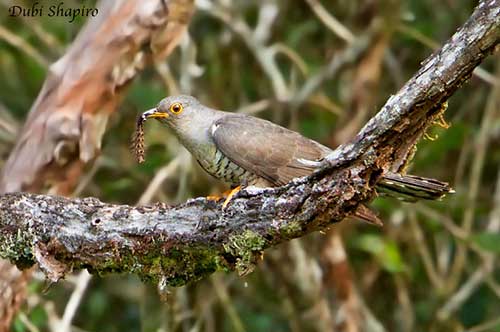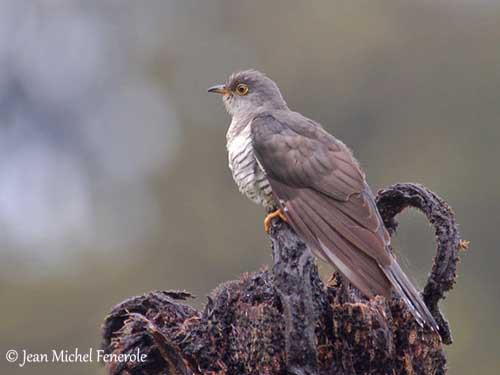
Fr: Coucou de Madagascar
Ang: Madagascan Cuckoo - Madagascar Lesser Cuckoo
All: Madagaskarkuckuck
Esp: Cuco Malgache
Ita: Cuculo del Madagascar
Nd: Madagaskarkoekoek
Sd: madagaskargök
Mal: hambosanga, Kakafotra, Taotaokafo, Taotaonkafa
Photographers:
Jean Michel Fenerole
Photos d’Oiseaux du monde
William Price
PBase-tereksandpiper & Flickr William Price
Dubi Shapiro
Dubi Shapiro Photo Galleries & Dubi Shapiro's Pictures on IBC
Alan & Ann Tate
AA Bird Photography
Text by Nicole Bouglouan
Sources:
HANDBOOK OF THE BIRDS OF THE WORLD vol 4 by Josep del Hoyo-Andrew Elliott-Jordi Sargatal - Lynx Edicions - ISBN: 8487334229
Cuckoos of the World Par Johannes Erritzøe, Clive F. Mann, Frederik Brammer, Richard A. Fuller – Editeurs A&C Black, 2012 – ISBN: 1408142678, 9781408142677
Birds of Madagascar and the Indian Ocean Islands Par Roger Safford, Adrian Skerrett, Frank Hawkins – ISBN: 1472924118, 9781472924117- Editeur: Bloomsbury Publishing, 2015
The Birds of Africa: Volume VIII: The Malagasy Region: Madagascar, Seychelles, Comoros, Mascarenes - Par Roger Safford, Frank Hawkins – ISBN: 1408190494, 9781408190494- Editeur: A&C Black, 2013
Birds of Madagascar: A Photographic Guide Par Pete Morris, Frank Hawkins – ISBN: 0300077556, 9780300077551- Editeur: Yale University Press, 1998
Birds of the Indian Ocean Islands Par Ian Sinclair, Olivier Langrand - ISBN: 1868729567, 9781868729562- Editeur: Struik, 2003
A Photographic Guide to Birds of the Indian Ocean Islands: Madagascar ... Par Ian Sinclair, Olivier Langrand, Fanja Andriamialisoa - ISBN-10: 177007175X - ISBN-13: 978-1770071759 - Publisher: Struik Publishers (July 18, 2011)
Madagascan Cuckoo
Cuculus rochii
Cuculiformes Order – Cuculidae Family
INTRODUCTION:
The Madagascan Cuckoo is endemic breeder to Madagascar. It moves to E Africa during the non-breeding season. It frequents various types of forest habitats, from sea-level to 1,500/1,600 metres of elevation. Like most species of the subfamily Cuculinae, it feeds on insects and hairy caterpillars.
The Madagascan Cuckoo is a brood-parasite cuckoo that lays the eggs in the nests of numerous passerines.
This species is vulnerable to forest clearance throughout Madagascar, and the population is decreasing. However, it is not currently globally threatened.
DESCRIPTION OF THE BIRD:
Biometrics:
Length: 26-28 cm
Weight: M: 64-65 g
The Madagascan Cuckoo is smaller than the Common Cuckoo (C. canorus) but both species have very similar plumage.
The adult has slate-grey upperparts and darker grey wings, uppertail-coverts and tail. The tail has white tip and the outer rectrices show small white spots.
On the underparts, chin, throat and breast are pale grey. Lower breast, flanks and belly are white with cinnamon-buff wash and narrow blackish bars. The undertail-coverts are cinnamon-buff and often unbarred. On the undertail, the larger rectrices show variable dark spotting and barring. Underwing-coverts and axillaries are whitish and finely barred blackish.
The head is dark grey, except lower cheeks and chin that are paler grey.
The bill is black with yellow base. The eyes are dark brown, surrounded by yellow eyering. Legs and feet are yellow.
Male and female are similar.

The juvenile has dark head with whitish mottling. Nape and neck sides are tawny. The upperparts are brown with paler fringes. The greater coverts have pale tips. Wings, breast and tail are finely barred dark brown. The undertail-coverts are barred black-and-white. The bare parts are duller than in adults.
RANGE:
The Madagascan Cuckoo breeds throughout Madagascar. It moves to E Africa during the non-breeding season. It is occasional in Mauritius.
HABITAT:
The Madagascan Cuckoo frequents several types of forest habitats in Madagascar, such as forest, gallery forest, scrub woodland, spiny subdesert woodland, eucalyptus plantations and marshes. It can be seen in altered habitats too. The species is visible from sea-level to 1,500/1,600 metres of elevation, and locally higher.
In E Africa, it frequents dense habitats, forest edges and thickets.
CALLS AND SONGS: SOUNDS BY XENO-CANTO
The Madagascan Cuckoo’s song is commonly heard in Madagascar, a series of 3-4 hollow notes frequently repeated, with lower final note “chew chew choo” or “chew chew chew choo”. During the breeding season, and especially in October/November, it sings continuously including at night.
The female may occasionally give loud calls “pee pee pee pee pee”.
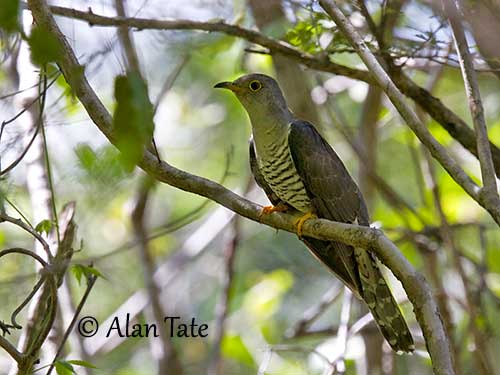
BEHAVIOUR IN THE WILD:
The Madagascan Cuckoo feeds on insects and hairy caterpillars gleaned from the vegetation, especially leaves and branches, and occasionally from the ground.
This species is generally secretive and solitary, although it may join mixed-species groups outside breeding season.
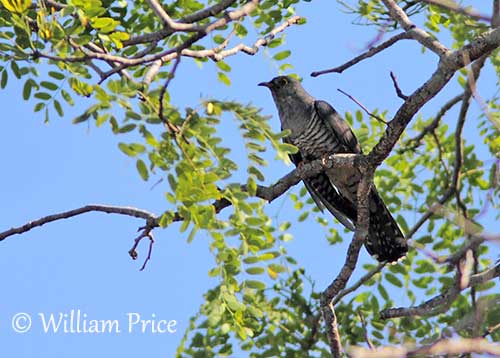
REPRODUCTION OF THIS SPECIES:
The breeding season takes place between August and April.
The female lays her eggs in the nests of various host species, mainly passerines of genera Cisticola, Neomixis, Tersiphone, Nesillas, Xanthomixys, Nectarinia, Copsychus and Artamella, and probably some others.
The eggs of the Madagascan Cuckoo are whitish with pink tinge and reddish-brown spots. They are not necessary similar to the host’s eggs. No more information.
PROTECTION / THREATS / STATUS:
The Madagascan Cuckoo is vulnerable to deforestation and degradation of the habitats and the population is decreasing.
However, the species is still common is a wide range of habitats and it is not globally threatened.
It is currently evaluated as Least Concern.
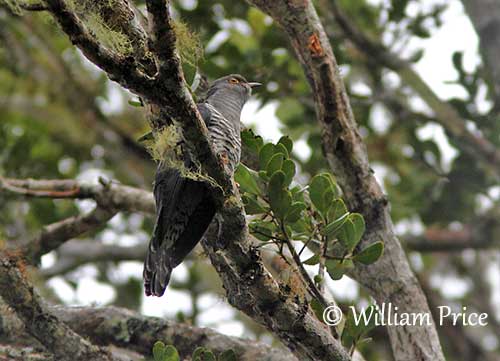
The Madagascan Cuckoo is a brood-parasite like most Old World Cuckoos. The mating system of these birds is not well known. There appear to be no strong pair-bonds between the mates in numerous species.
It breeds in Madagascar and spends the non-breeding season in E Africa where it can be seen during the austral winter. However, some individuals remain in Madagascar.
Within Madagascar, it moves from the eastern forest to the dry western part of the island during the rainy season.
The Madagascan Cuckoo has strong, swift, direct flight and is able to move over long distances thanks to its long wings. It is very similar to a falcon while flying.
